Advertisement
Many can resume unrestricted activity within 1 year
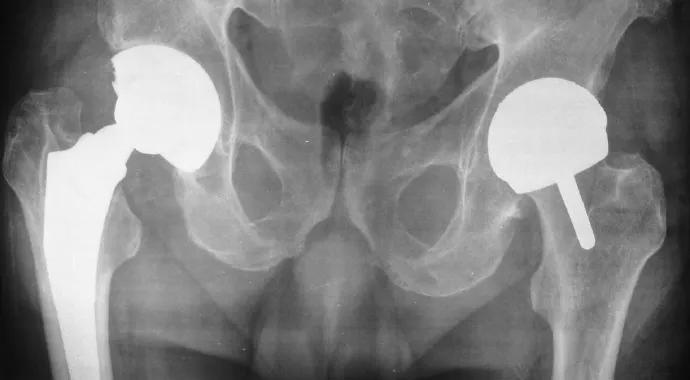
Advertisement
Cleveland Clinic is a non-profit academic medical center. Advertising on our site helps support our mission. We do not endorse non-Cleveland Clinic products or services. Policy
Hip resurfacing has several appealing features for the younger patient with hip arthritis. First, considerable bone is preserved in the upper femur compared with traditional hip replacement. Millimeters, rather than inches, are removed. Second, loading of the upper femur is more normal in that the body weight is applied to the top of the femur instead of down the stem to the interior of the upper thigh. As a result, the progressive bone redistribution that takes place for several years after hip replacement does not occur with hip resurfacing.
Together, these two factors result in much less proximal femoral bone loss after resurfacing than after hip replacement. Long stems and bone grafting are therefore not needed for revision of a resurfacing device. Resurfacing can be revised to a standard total hip.
Additionally, the large femoral head of a resurfacing makes dislocation — the principal reason for revision surgery, according to U.S. federal databases ‒ quite rare. Leg length inequality, probably the second most common complaint following total hip replacement, also is rare with resurfacing.1
The stability and normal loading of hip resurfacing allow patients to return to unrestricted activity within a year of the procedure.2,3 This includes running, jumping, impact sports, manual labor and other activities that typically are discouraged following total hip replacement.
Concerns have been raised about metal debris from the bearings used in hip resurfacing. High levels of metal debris can result in pain, inflammation, swelling, tissue necrosis and pseudotumors.
Most of the problems with metallosis have occurred using modular metal-on-metal total hip replacement (MOM THR), not resurfacing. Unfortunately, the large heads involved in these procedures exerted excessive torque on trunions designed to accommodate much smaller head diameters.4 Micromotion, fretting and corrosion resulted in high metal ion levels and, in some cases, pseudotumors. MOM THR is no longer performed at most centers, including Cleveland Clinic.
Resurfacing is not the same as MOM THR. There is no modularity and no trunion. The risk of pseudotumor is 0.1 to 0.3 percent.5,6 In resurfacing, only three scenarios can result in excessive metallosis:
Advertisement
In the absence of one of these three scenarios, metal ion levels remain very low and do not seem to pose a health risk. In fact, after extensive adjustment for confounding factors, mortality rates are lower with resurfacing compared with total hip replacement, and the risk of malignancy appears to decrease following hip resurfacing compared with the risk in an age and sex matched population.7-9 Mechanical complications, such as femoral neck fracture or loosening, are unusual.4
In registry data, results with the BHR have surpassed those for all other devices.10
Success rates in young men have been exceptionally good. Aseptic survivorship rates of 99 percent and 100 percent at 10 and 14 years, respectively, have been reported in males under age 50 from two large centers in the UK.11,12 At Cleveland Clinic, our survivorship in this challenging group is 100 percent.
In the series of the designing surgeon (Derek McMinn, MD, FRCS), the success rate at 15 years was 98 percent in males and 92 percent in females, including all ages and diagnoses.13
Advertisement
At Cleveland Clinic, we have performed more than 2,000 BHR procedures (see Figure for an example). The average patient age has been 53 (range, 14 to 84); 73 percent of patients have been male. We have had two femoral neck fractures, two cases of late femoral head collapse and two instances of metallosis (one in a small dysplastic female, one from socket malposition). Neither patient with metallosis developed a destructive pseudotumor. Additional imaging, such as CT scans for femoral anteversion and standing lateral hip X-rays for pelvic tilt, aid in patient selection. Our overall success rate is over 99 percent at up to eight years.
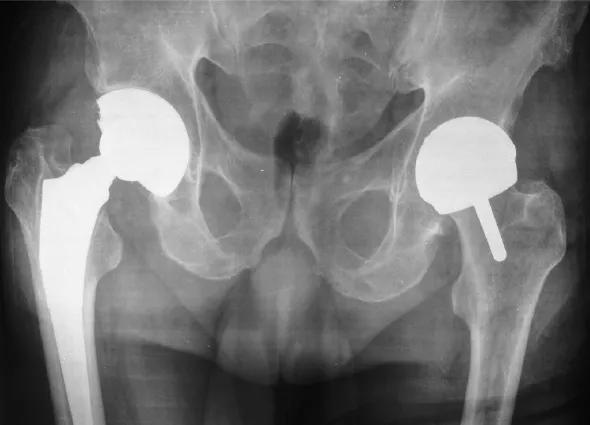
Figure. Right total hip replacement with left BHR. Note the bone loss of the upper femur.
Hip resurfacing can provide excellent outcomes in properly selected patients when accurate technique and a well-designed implant are used. In the absence of one or more of these factors, metallosis may occur. Resurfacing allows full activity to be restored for the younger, active patient, and revision options are favorable.
Advertisement
About the Author
Dr. Brooks is a staff physician in the Center for Adult Reconstruction in the Department of Orthopaedic Surgery and Chief of Surgery at Cleveland Clinic’s Euclid Hospital.
Disclosure: Dr. Brooks reports that he is a consultant for Stryker and for Smith & Nephew.
Advertisement
Advertisement

More report a clinically meaningful change in function at 90 days compared to patients with lower BMI

Patient climbs Mount Kilimanjaro 8 months after surgery
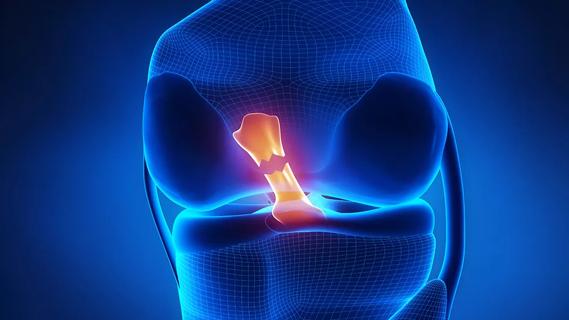
Study reports zero infections in nearly 300 patients
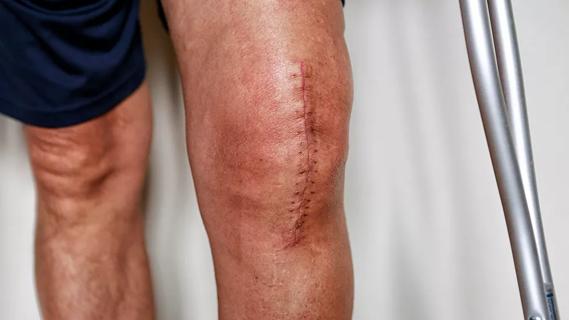
How to diagnose and treat crystalline arthropathy after knee replacement
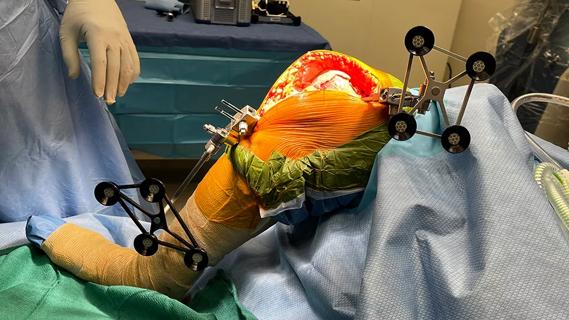
Study finds that fracture and infection are rare

Reduced narcotic use is the latest on the list of robotic surgery advantages

Cleveland Clinic orthopaedic surgeons share their best tips, most challenging cases and biggest misperceptions

How it actually compares to posterior and lateral approaches